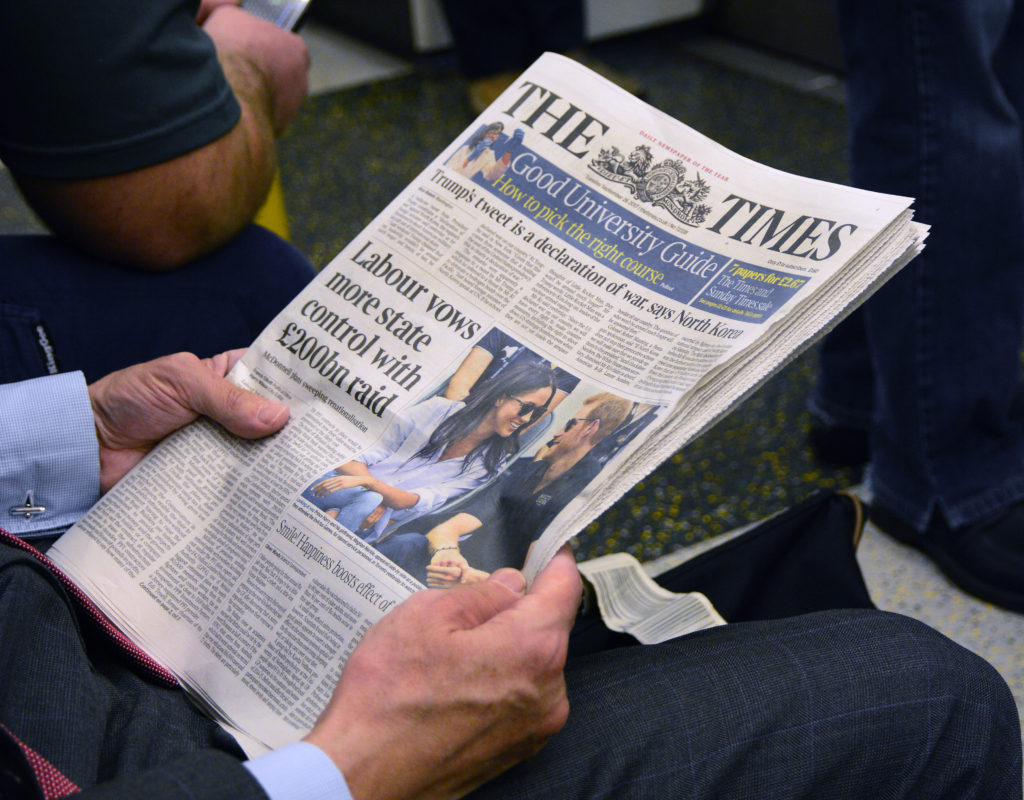A man reads The Times newspaper as he rides the tube in London. (Robert Alexander/Getty)
Media coverage of trans issues has been linked to an increase in the number of young people seeking support at specialist gender clinics, a landmark study has found.
In the past 10 years there has been a significant increase in the number of under-18’s being referred to gender clinics, and the reasons for this have so far been unexplained.
“Such a rapid increase in clinical demand is unusual within medicine,” said study lead Ken C Pang, “and the underlying reasons for this increase are of great interest”.
“Various theories and assumptions have been put forward to explain the rising rates of referral to specialist gender clinics. We felt it was important to move beyond such theories and assumptions to look at the empirical evidence,” said Pang, a clinical scientist fellow at the Murdoch Children’s Research Institute.
The study, published in medical journal JAMA Network Open, used referral data from the UK’s only gender clinic for under 18’s, GIDS, and the Royal Children’s Hospital Gender Service (RCHGS) in Melbourne, Australia.
There were 5,242 young patients referred to either clinic between 2009 and 2016, and the researchers also collected media articles and items that mentioned transgender issues in passing, articles with a primary focus on trans issues, and articles that explicitly mentioned either GIDS or the Melbourne clinic.
The results showed a positive correlation between the rise in referrals and the number of media articles about trans issues.
“Across an eight-year study period during which more than 5,000 trans and gender diverse young people were referred to two pediatric gender clinics in the UK and Australia, we observed an association between weekly referral rates and the number of trans-related items appearing within the local media 1 to 2 weeks beforehand,” Pang told PsyPost.
“While these data do not provide any direct evidence of causation, the results are nonetheless consistent with our clinical experience, in which trans and gender diverse patients and their families commonly identify the media as a way of empowering them to seek clinical assistance.”
In the study, which was published in July this year, the researchers discuss how the media could be helping trans youth acknowledge their gender and seek support.
“First, media serve as an important means by which young people explore, recognise, and understand their overall identity, and it seems reasonable that the same might also be true of gender identity more specifically,” the researchers said.
“Anecdotally, many of our patients have reported that their clandestine feelings of gender diversity were brought to the surface by media stories that prominently featured [trans or gender diverse] individuals and helped them to appreciate that others share similar feelings.”
Pang noted that a key limitation of the study is that it did not collect articles from social media, adding: “In terms of next steps, I think it would be important to determine whether the sentiment and tone of media stories affect the association we observed.
“For example, in the past few years, there has been a significant amount of negative press coverage of paediatric gender services, and it is possible that this may have dissuaded some young people and their families from seeking care.
“Thus, testing whether negative media coverage is associated with reduced rates of help-seeking would be of interest. Another area for future study would be to look specifically at social media.”
